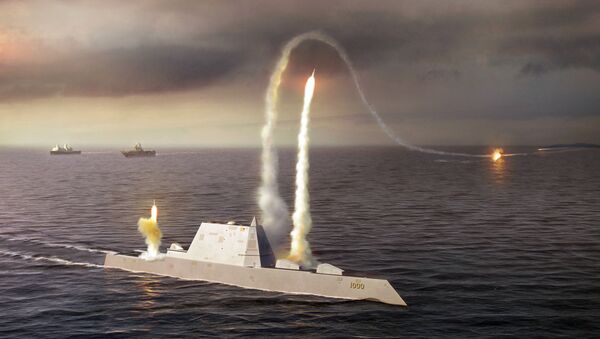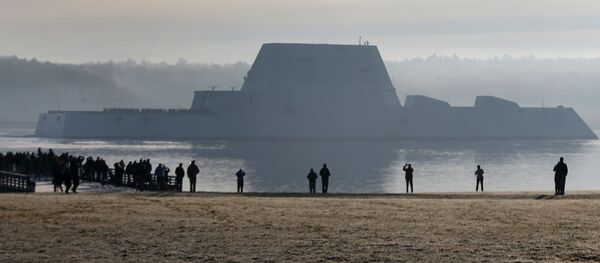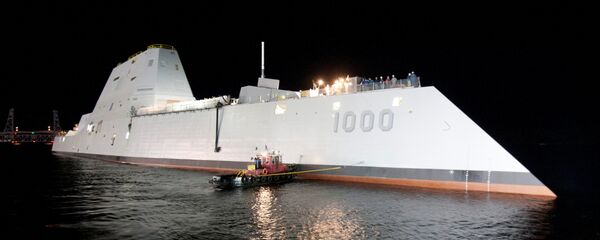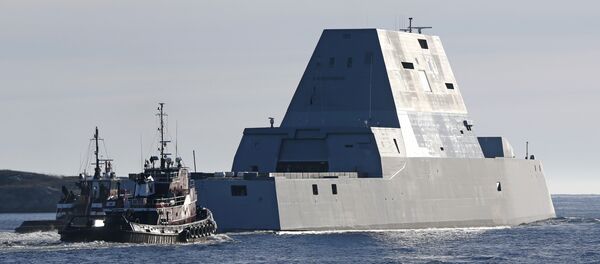Also known as DDG 1000, the Zumwalt is a stealth surface warfare ship that is, according to the ship’s program manager Rear Admiral James Downey, the "most technically complex and advanced warship the world has ever seen."
Officially delivered to the US Navy in May, the Zumwalt will soon undergo ship activation in San Diego before moving forward with live fire drills.
"In the next phase, the Navy will be driving, connecting, integrating and proving the functionality of the ship systems such as radar, sonar and gun," said Wade Knudson, DDG 1000 Program Manager with defense contractor Raytheon, according to Business Insider.
"The Navy will test out the basics [to] make sure the ship can work then by testing those components of the ship that actually make it a warship."
These tests will include launching the ship’s various missiles and torpedoes, including the Tomahawk, Evolved Sea Sparrow Missile, and Vertical Launch Anti-Submarine Rockets. All in all, the ship is outfitted with 80 missile launch tubes spread throughout the hull, and all will have to be tested.
"It has a common launcher so you can change the adapter or computer function which connects the ship to the missile," Knudson said.
The Zumwalt also features a 155mm long range gun that can launch a variety of projectiles up to 64 nautical miles.
The ship’s unique high frequency sonar will also need to be tested.
"High frequency is better for detecting small objects. If you are only going after submarines, then medium frequency would be sufficient. You are going to find the submarine – then you would be able to fire one of the vertically launched ASROC [missiles] to engage that target," Knudson said.
"What makes this unique is that high-frequency enable mine detection and mine avoidance."
As the first ship in the new Zumwalt class, the Pentagon has a lot riding on the ship’s success. Ideally, it will perform better than the US Navy’s Littoral Combat Ships, which are currently undergoing extensive reviews after being rushed through development.
"Due to ongoing challenges with littoral combat ships, I ordered an engineering stand-down for LCS squadrons and the crews that fall under their command," Vice Adm. Tom Rowden said in a statement, according to Military.com.
"These stand downs allowed for time to review, evaluate and renew our commitment to ensuring our crews are fully prepared to operate these ships safely."





